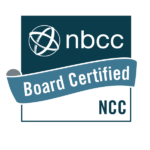These days, more people are seeing the benefits of therapy. The last few years have been hard for everyone on a national and global scale. We have gone through a lot as a whole and of course, in our individual lives.
Most people have basic knowledge about traditional therapy. Sometimes also called talk therapy. With that said, a lot of people don’t know about specific approaches to help someone with their issues.
Talk therapy is beneficial but sometimes a more specific approach is needed. For instance, someone may have gone through a traumatic experience. For some, talking through their issues is enough; while others see no relief. In situations like that, EMDR Therapy can help tremendously. Let’s go over what this therapy is and how it works.
EMDR Therapy Explained
EMDR is short for Eye Movement and Desensitization Reprocessing. Looking at the name can be really off putting to those who aren’t familiar with it. It sounds like some sort of science experiment, basically. EMDR is based on science, but isn’t experimental at all.
When we are in the REM stage of sleep, this is when our brains process our memories and experiences. As we go through this cycle, scientists discovered that the eyes dart back and forth when our eyes are closed.

EMDR is based on that principle. When someone has gone through a traumatic experience, the memories associated with it are often hazy or unclear. Or sometimes so damaging that we don’t actively process it as a way to not deal with it.
That is good in theory – out of sight, out of mind, right? Unfortunately, no. Even when you don’t think about it, the body and your mind still holds on to the pain and emotional distress that it caused.
This is why someone will begin to have PTSD symptoms or feel that they can’t just move on from the event.
EMDR is also useful for mood disorders such as anxiety and depression.
When this is happening, talk therapy isn’t always useful so healing can begin.
This is when EMDR can be beneficial.
How Does EMDR work?
EMDR is an eight stage process. Keep in mind, that doesn’t mean in eight sessions the work will be concluded. It often takes many sessions over a period of time. However, don’t let that prevent you from wanting to try it for your issues. Even though it does take time, it’s a quicker approach than traditional therapy.
The first three stages of EMDR are more of an intake process. You go over your history, what trauma you have gone through, and a specific event you want to heal from.
Stages four, five, and six are when the actual work of EMDR occurs. Using bilateral eye movements techniques, an EMDR therapist will ask their client to remember the painful memory. Recalling the memory while using guided eye movements is how we can get clients to reprocess the memory or pain to promote healing and personal growth.
This is done in a safe environment and at any point the client becomes too distressed, the work can cease. A therapist will sit with their client until they are calmer and feel better control of themselves.
Working through those three stages has no timeline; it depends on the client. In the final two stages, they can be considered more of an outtake or closure sessions.
Trauma can happen to anyone, for any reason. It’s our bodies natural response to highly emotional and distressing situations. Even though it is natural, that doesn’t make it easy to deal with.
If you went through something traumatic, it’s important for you to know that it doesn’t have to stay this way. Please reach out to us when you are ready so you can learn more about EMDR Therapy and the healing it gives.



